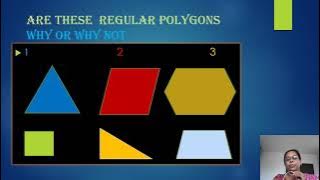Types of polygons | Elementary geometry
Bicentric polygon
In geometry, a bicentric polygon is a tangential polygon (a polygon all of whose sides are tangent to an inner incircle) which is also cyclic — that is, inscribed in an outer circle that passes through each vertex of the polygon. All triangles and all regular polygons are bicentric. On the other hand, a rectangle with unequal sides is not bicentric, because no circle can be tangent to all four sides. (Wikipedia).



















